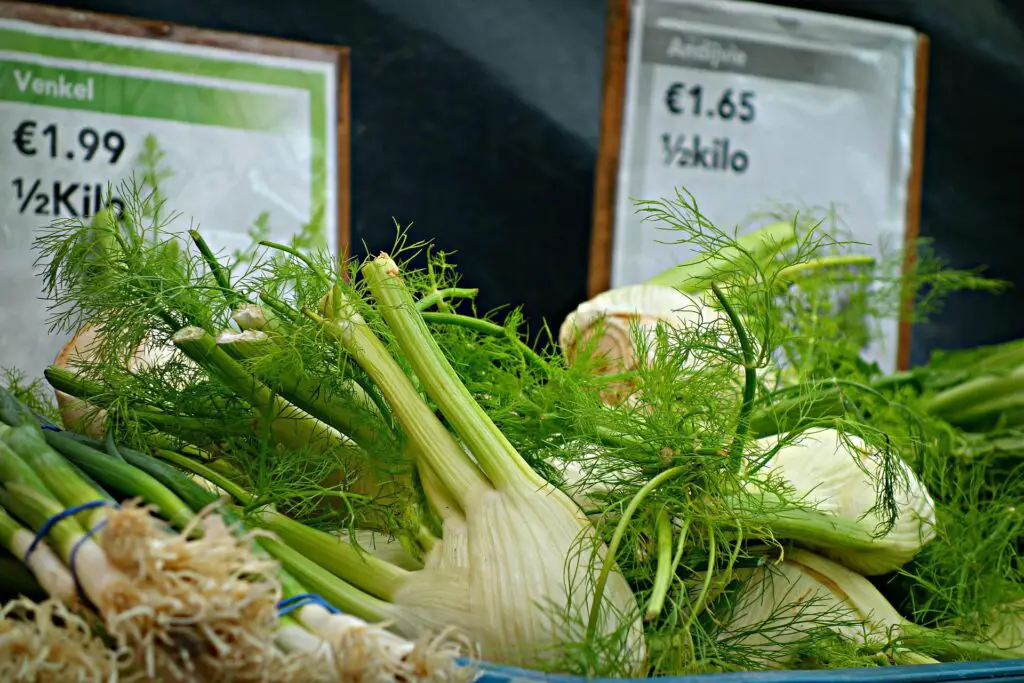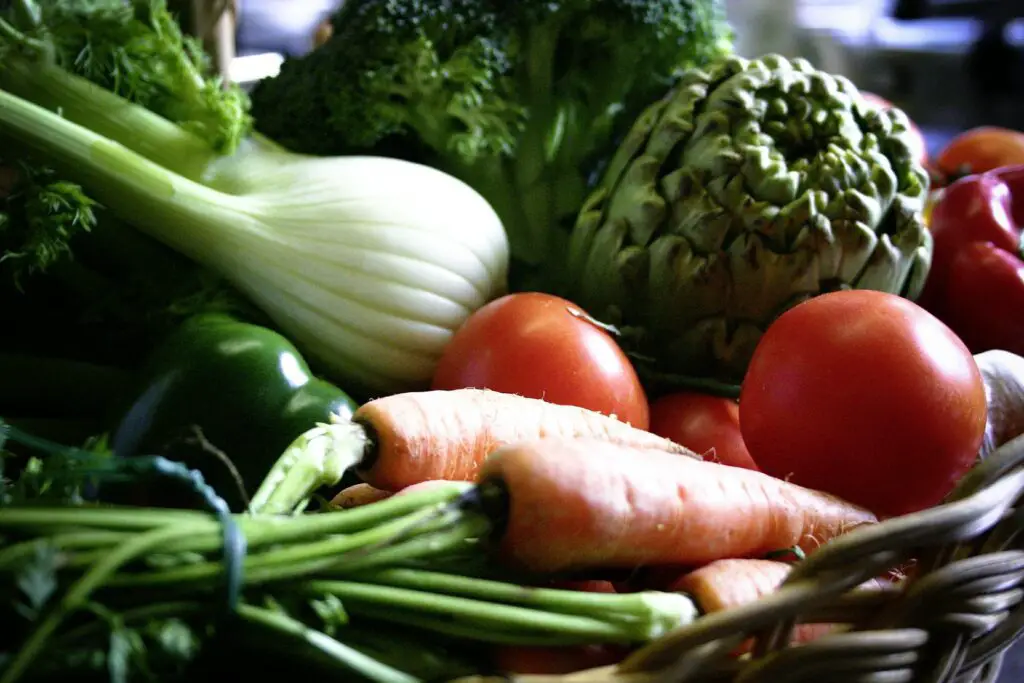If you are following a low FODMAP diet, then you may be wondering if fennel is a low FODMAP food. In this blog post, we will explore whether or not fennel is low in FODMAP and provide some tips for incorporating this delicious vegetable into your diet.
The different types of FODMAPs
There are different types of FODMAPs, which are carbohydrates that can be difficult to digest. FODMAPs include lactose, fructose, fructans, and Galatians. FODMAPs are found in a variety of foods, including wheat, rye, onions, garlic, honey, apples, pears, and watermelons. Many people with digestive problems find that reducing their intake of FODMAPs helps to ease symptoms such as bloating, gas, and abdominal pain. Some people choose to follow a low-FODMAP diet, which means avoiding foods that contain high levels of these carbohydrates. However, it is important to speak to a doctor or dietitian before making any drastic changes to your diet. Other types of food intolerances (such as lactose intolerance) can have similar symptoms to those caused by FODMAPs, so it is important to get a diagnosis from a medical professional before cutting out any foods from your diet.
How to identify high and low FODMAP foods
There are many resources available to help you identify high and low FODMAP foods. The Monash University Low FODMAP Diet app is a great place to start. This app is based on the research of the Monash University FODMAP Team and is updated regularly with the latest information. Another helpful resource is the FODMAP Friendly website. This website provides a searchable database of food products that have been tested for their FODMAP content.
When it comes to specific foods, some general guidelines are:
- High FODMAP fruits include apples, pears, mangoes, watermelons, and cherries.
- Low FODMAP fruits include bananas, oranges, grapes, strawberries, and blueberries.
- High FODMAP vegetables include artichokes, leeks, okra, and sweet corn.
- Low FODMAP vegetables include carrots, tomatoes, potatoes, and green beans.
- High FODMAP nuts include pistachios and cashews.
is fennel low fodmap and the Low FODMAP diet

Fennel is a crunchy, slightly sweet vegetable that is popular in many different cuisines. It is often used as a flavoring agent, but it can also be eaten on its own as a nutritious snack. Fennel is a good source of fiber, vitamins, and minerals, and it has a variety of health benefits. However, for people with irritable bowel syndrome (IBS), fennel may cause digestive problems. This is because fennel contains fermentable oligosaccharides, disaccharides, monosaccharides, and polyols (FODMAPs).
These compounds are poorly absorbed by the gut and can cause gas, bloating, and other gastrointestinal symptoms in people with IBS. The low FODMAP diet is designed to minimize these symptoms by restricting foods that contain FODMAPs. While fennel is high in FODMAPs, there are some ways to make it easier to digest. For example, you can cook fennel to reduce its FODMAP content or remove the tough outer layer before eating. You can also purchase fennel seed oil, which is low in FODMAPs and can be used to flavor food without causing digestive problems.
Tips for incorporating fennel into your diet
Fennel is a versatile plant that can be used in both sweet and savory dishes. The bulb is the most commonly used part of the plant, but the leaves and seeds can also be utilized. Fennel has a mild anise flavor that is reminiscent of black licorice. Here are some tips for incorporating fennel into your diet:
- Add diced fennel to salads or use the leaves as a garnish.
- Include shaved fennel in your next charcuterie board.
- Roast fennel wedges and serve them as a side dish.
- Use fennel seeds to flavor sauces, soups, and stews.
- Make a fennel-infused oil or vinegar for dressing salads.
- Add chopped fennel to cakes, cookies, or bread for a subtle anise flavor.
Other low FODMAP vegetables to try
While there are a few low FODMAP vegetables that are probably already in your regular rotation (think carrots, green beans, and lettuce), there are plenty of other delicious options to try. For example, cabbage is a great source of vitamins C and K and can be enjoyed cooked or raw. Another nutrient-rich option is spinach, which is also high in iron.

Alternatively, you could go for a heartier vegetable like sweet potato. This starchy veggie is not only filling but also packed with fiber and vitamins A and C. Lastly, don’t forget about the humble tomato. While technically a fruit, tomatoes are commonly used as a vegetable and make a great addition to salads, sandwiches, and pasta. So don’t be afraid to experiment with your vegetables and explore all the delicious low FODMAP options out there!
How can I include fennel in my diet if it is high in FODMAPs?
Individuals who are sensitive to FODMAPs may want to avoid eating fennel, as it is high in these indigestible carbohydrates. However, there are a few ways to include fennel in your diet if you are sensitive to FODMAPs. One option is to cook the fennel, as this can help to reduce the amount of FODMAPs present. Another option is to consume only a small amount of fennel at one time. For example, you could add a few slices of fennel to a salad or soup. Finally, you could try fermenting the fennel, as this can also help to reduce the amount of FODMAPs. If you are sensitive to FODMAPs, talk to your doctor or a registered dietitian before adding fennel to your diet.
What are some tips for following the low FODMAP diet?
A low FODMAP diet is a therapeutic diet that is often advised for individuals with irritable bowel syndrome (IBS). The diet involves avoiding foods that are high in certain types of carbohydrates, which can be difficult to digest and can contribute to gastrointestinal symptoms. While the low FODMAP diet can be challenging to follow, there are some tips that can make the process easier.
First, it is important to educate yourself about which foods are high in FODMAPs and which are not. There are many resources available online and in cookbooks. Second, meal planning is essential. It can be helpful to make a list of FODMAP-friendly recipes and to batch cook or freeze meals to have on hand. Finally, it is important to be patient and to listen to your body. Everyone’s experience with the diet is different, and it may take some time to figure out what works for you. But with some preparation and trial and error, following the low FODMAP diet can help you manage your IBS symptoms.
Read More;
- Are Carrots Low FODMAP?
- Is Tahini Low FODMAP?
- Are Cranberries Low FODMAP?
- Low FODMAP Orange Chicken | No Onion No Garlic Recipe
- Is Beer Low FODMAP?
Leave a Reply